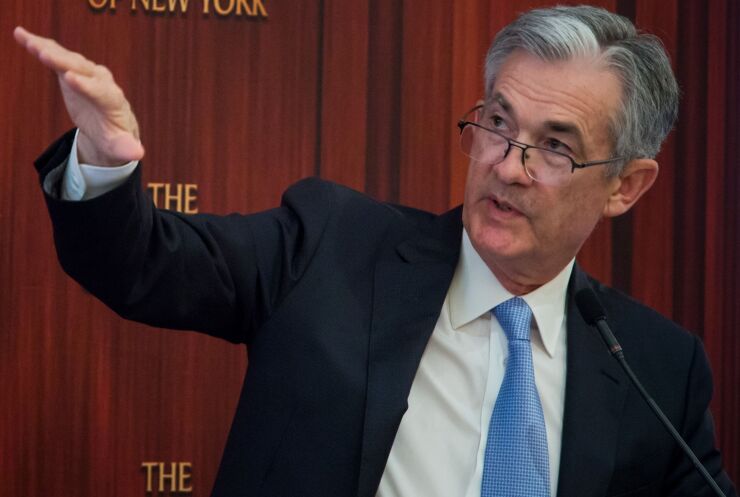It’s tricky being a high-yield debt investor when there’s nothing to buy with a high yield. The definition needs revising. The consequences of getting such meager returns on junk bonds is that the margin for error for discerning investment managers is vanishingly thin. You’re meant to be rewarded for investing in riskier companies, but this isn’t happening right now.
Fortunately, central bank largess means corporate defaults haven’t really increased during the pandemic, and are even forecast to fall. But bond buyers are recovering less of their investment from companies that have collapsed. They need to place their bets with more care.
Risk assets (the riskier the better) have been on a fabulous run since the central bank cavalry came charging over the pandemic hill last year. These bucolic market conditions will continue, after the U.S. Federal Reserve said it wouldn’t take its foot off the stimulus pedal anytime soon.
It’s that time in the markets cycle when the blue-chip governments and corporates have drunk their fill in the debt capital markets, and it’s the turn of harder-to-price credits. No wonder corporates are tripping over themselves to issue when financing costs are so low; even first-time or rare issuers can chance their arm. Despite a record April for U.S. junk bond sales and a corresponding jump in euro sub-investment grade issuance there’s still a paucity of supply for yield-starved investors.
That can lead to an overly relaxed approach on credit risk, so it’s important to remember the companies that do blow up will leave investors with deeper wounds than usual. Deutsche Bank AG analysts point out that recoveries from senior unsecured bonds in 2020 were 34% compared to the five-year average of 40%. Loan recoveries fell to 52% compared with a longer-term average of 57%. That’s to be expected after a sharp recession and recovery rates could improve but it’s something to watch.

Investment-grade spreads are rising steadily as there’s insufficient reward to entice investors. The temptation is greater to reach below the BBB rating threshold into junk, as my Bloomberg News colleagues have highlighted. The riskier the high-yield credit, the louder the party music is still playing. But this narrowing of the difference between yields on investment-grade debt and junk bonds doesn’t bode well. It’s a sign that leverage in the system is rising.
Some of this is due to money being parked temporarily in high-yield debt by private equity funds, which have overflowing war chests and are struggling to find reasonably priced companies to buy. That might change if the recovery is sustained and a merger and acquisition boom takes hold. In the meantime, the money has to earn a return somewhere.
Having had super-low interest rates for more than a decade, the corporate world has become transfixed by the cost of financing and not on the opportunities and risks in the real economy. High-yield spreads see only nirvana — endless quantitative easing has numbed any sense of risk.
Only a major macro event will snap us out of this complacency but that may be coming. A sustained inflation spike leading to a big jump in government bond yields and a correction lower in equities would change the mood. We saw a glimmer of this when five-year U.S. Treasury yields doubled in February. The Fed’s determination to stick with stimulus when the economy is growing fast risks making the fallout much more painful.
The worst consequences would be for high-yield debt. After all, in 2020 we saw average junk bond yields blow out to double figures. The risk-to-reward ratio seems to have shifted too far the other way now.
Marcus Ashworth





